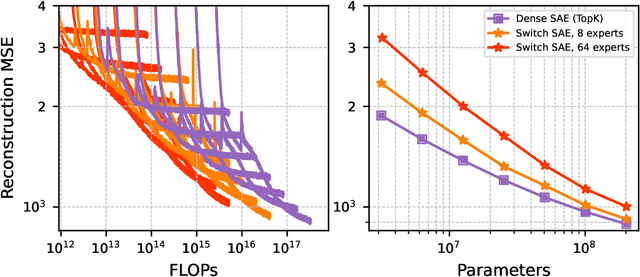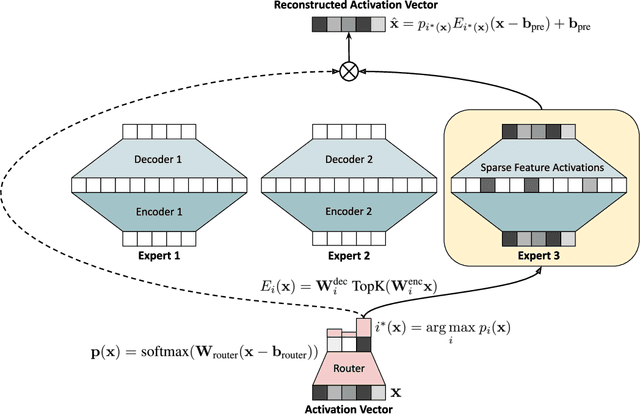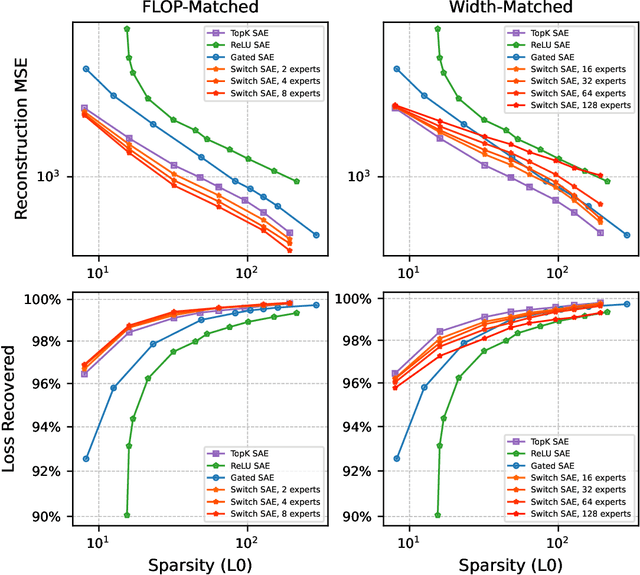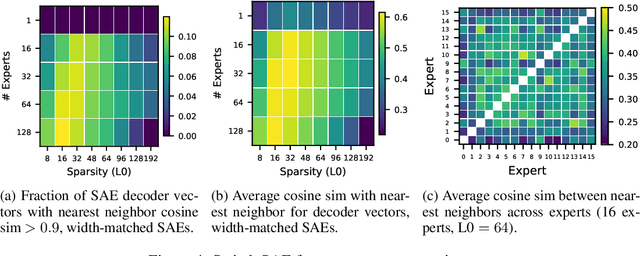Christian Schroeder de Witt
Michael Pokorny
Multi-Agent Security Tax: Trading Off Security and Collaboration Capabilities in Multi-Agent Systems
Feb 26, 2025Abstract:As AI agents are increasingly adopted to collaborate on complex objectives, ensuring the security of autonomous multi-agent systems becomes crucial. We develop simulations of agents collaborating on shared objectives to study these security risks and security trade-offs. We focus on scenarios where an attacker compromises one agent, using it to steer the entire system toward misaligned outcomes by corrupting other agents. In this context, we observe infectious malicious prompts - the multi-hop spreading of malicious instructions. To mitigate this risk, we evaluated several strategies: two "vaccination" approaches that insert false memories of safely handling malicious input into the agents' memory stream, and two versions of a generic safety instruction strategy. While these defenses reduce the spread and fulfillment of malicious instructions in our experiments, they tend to decrease collaboration capability in the agent network. Our findings illustrate potential trade-off between security and collaborative efficiency in multi-agent systems, providing insights for designing more secure yet effective AI collaborations.
Fundamental Limitations in Defending LLM Finetuning APIs
Feb 20, 2025Abstract:LLM developers have imposed technical interventions to prevent fine-tuning misuse attacks, attacks where adversaries evade safeguards by fine-tuning the model using a public API. Previous work has established several successful attacks against specific fine-tuning API defences. In this work, we show that defences of fine-tuning APIs that seek to detect individual harmful training or inference samples ('pointwise' detection) are fundamentally limited in their ability to prevent fine-tuning attacks. We construct 'pointwise-undetectable' attacks that repurpose entropy in benign model outputs (e.g. semantic or syntactic variations) to covertly transmit dangerous knowledge. Our attacks are composed solely of unsuspicious benign samples that can be collected from the model before fine-tuning, meaning training and inference samples are all individually benign and low-perplexity. We test our attacks against the OpenAI fine-tuning API, finding they succeed in eliciting answers to harmful multiple-choice questions, and that they evade an enhanced monitoring system we design that successfully detects other fine-tuning attacks. We encourage the community to develop defences that tackle the fundamental limitations we uncover in pointwise fine-tuning API defences.
Multi-Agent Risks from Advanced AI
Feb 19, 2025Abstract:The rapid development of advanced AI agents and the imminent deployment of many instances of these agents will give rise to multi-agent systems of unprecedented complexity. These systems pose novel and under-explored risks. In this report, we provide a structured taxonomy of these risks by identifying three key failure modes (miscoordination, conflict, and collusion) based on agents' incentives, as well as seven key risk factors (information asymmetries, network effects, selection pressures, destabilising dynamics, commitment problems, emergent agency, and multi-agent security) that can underpin them. We highlight several important instances of each risk, as well as promising directions to help mitigate them. By anchoring our analysis in a range of real-world examples and experimental evidence, we illustrate the distinct challenges posed by multi-agent systems and their implications for the safety, governance, and ethics of advanced AI.
PSyDUCK: Training-Free Steganography for Latent Diffusion
Jan 31, 2025



Abstract:Recent advances in AI-generated steganography highlight its potential for safeguarding the privacy of vulnerable democratic actors, including aid workers, journalists, and whistleblowers operating in oppressive regimes. In this work, we address current limitations and establish the foundations for large-throughput generative steganography. We introduce a novel approach that enables secure and efficient steganography within latent diffusion models. We show empirically that our methods perform well across a variety of open-source latent diffusion models, particularly in generative image and video tasks.
Humanity's Last Exam
Jan 24, 2025Abstract:Benchmarks are important tools for tracking the rapid advancements in large language model (LLM) capabilities. However, benchmarks are not keeping pace in difficulty: LLMs now achieve over 90\% accuracy on popular benchmarks like MMLU, limiting informed measurement of state-of-the-art LLM capabilities. In response, we introduce Humanity's Last Exam (HLE), a multi-modal benchmark at the frontier of human knowledge, designed to be the final closed-ended academic benchmark of its kind with broad subject coverage. HLE consists of 3,000 questions across dozens of subjects, including mathematics, humanities, and the natural sciences. HLE is developed globally by subject-matter experts and consists of multiple-choice and short-answer questions suitable for automated grading. Each question has a known solution that is unambiguous and easily verifiable, but cannot be quickly answered via internet retrieval. State-of-the-art LLMs demonstrate low accuracy and calibration on HLE, highlighting a significant gap between current LLM capabilities and the expert human frontier on closed-ended academic questions. To inform research and policymaking upon a clear understanding of model capabilities, we publicly release HLE at https://lastexam.ai.
MALT: Improving Reasoning with Multi-Agent LLM Training
Dec 02, 2024


Abstract:Enabling effective collaboration among LLMs is a crucial step toward developing autonomous systems capable of solving complex problems. While LLMs are typically used as single-model generators, where humans critique and refine their outputs, the potential for jointly-trained collaborative models remains largely unexplored. Despite promising results in multi-agent communication and debate settings, little progress has been made in training models to work together on tasks. In this paper, we present a first step toward "Multi-agent LLM training" (MALT) on reasoning problems. Our approach employs a sequential multi-agent setup with heterogeneous LLMs assigned specialized roles: a generator, verifier, and refinement model iteratively solving problems. We propose a trajectory-expansion-based synthetic data generation process and a credit assignment strategy driven by joint outcome based rewards. This enables our post-training setup to utilize both positive and negative trajectories to autonomously improve each model's specialized capabilities as part of a joint sequential system. We evaluate our approach across MATH, GSM8k, and CQA, where MALT on Llama 3.1 8B models achieves relative improvements of 14.14%, 7.12%, and 9.40% respectively over the same baseline model. This demonstrates an early advance in multi-agent cooperative capabilities for performance on mathematical and common sense reasoning questions. More generally, our work provides a concrete direction for research around multi-agent LLM training approaches.
Delta-Influence: Unlearning Poisons via Influence Functions
Nov 20, 2024



Abstract:Addressing data integrity challenges, such as unlearning the effects of data poisoning after model training, is necessary for the reliable deployment of machine learning models. State-of-the-art influence functions, such as EK-FAC, often fail to accurately attribute abnormal model behavior to the specific poisoned training data responsible for the data poisoning attack. In addition, traditional unlearning algorithms often struggle to effectively remove the influence of poisoned samples, particularly when only a few affected examples can be identified. To address these challenge, we introduce $\Delta$-Influence, a novel approach that leverages influence functions to trace abnormal model behavior back to the responsible poisoned training data using as little as just one poisoned test example. $\Delta$-Influence applies data transformations that sever the link between poisoned training data and compromised test points without significantly affecting clean data. This allows $\Delta$-Influence to detect large negative shifts in influence scores following data transformations, a phenomenon we term as influence collapse, thereby accurately identifying poisoned training data. Unlearning this subset, e.g. through retraining, effectively eliminates the data poisoning. We validate our method across three vision-based poisoning attacks and three datasets, benchmarking against four detection algorithms and five unlearning strategies. We show that $\Delta$-Influence consistently achieves the best unlearning across all settings, showing the promise of influence functions for corrective unlearning. Our code is publicly available at: \url{https://github.com/andyisokay/delta-influence}
MAD-Sherlock: Multi-Agent Debates for Out-of-Context Misinformation Detection
Oct 26, 2024



Abstract:One of the most challenging forms of misinformation involves the out-of-context (OOC) use of images paired with misleading text, creating false narratives. Existing AI-driven detection systems lack explainability and require expensive fine-tuning. We address these issues with MAD-Sherlock: a Multi-Agent Debate system for OOC Misinformation Detection. MAD-Sherlock introduces a novel multi-agent debate framework where multimodal agents collaborate to assess contextual consistency and request external information to enhance cross-context reasoning and decision-making. Our framework enables explainable detection with state-of-the-art accuracy even without domain-specific fine-tuning. Extensive ablation studies confirm that external retrieval significantly improves detection accuracy, and user studies demonstrate that MAD-Sherlock boosts performance for both experts and non-experts. These results position MAD-Sherlock as a powerful tool for autonomous and citizen intelligence applications.
Efficient Dictionary Learning with Switch Sparse Autoencoders
Oct 10, 2024



Abstract:Sparse autoencoders (SAEs) are a recent technique for decomposing neural network activations into human-interpretable features. However, in order for SAEs to identify all features represented in frontier models, it will be necessary to scale them up to very high width, posing a computational challenge. In this work, we introduce Switch Sparse Autoencoders, a novel SAE architecture aimed at reducing the compute cost of training SAEs. Inspired by sparse mixture of experts models, Switch SAEs route activation vectors between smaller "expert" SAEs, enabling SAEs to efficiently scale to many more features. We present experiments comparing Switch SAEs with other SAE architectures, and find that Switch SAEs deliver a substantial Pareto improvement in the reconstruction vs. sparsity frontier for a given fixed training compute budget. We also study the geometry of features across experts, analyze features duplicated across experts, and verify that Switch SAE features are as interpretable as features found by other SAE architectures.
Toward Robust Real-World Audio Deepfake Detection: Closing the Explainability Gap
Oct 09, 2024



Abstract:The rapid proliferation of AI-manipulated or generated audio deepfakes poses serious challenges to media integrity and election security. Current AI-driven detection solutions lack explainability and underperform in real-world settings. In this paper, we introduce novel explainability methods for state-of-the-art transformer-based audio deepfake detectors and open-source a novel benchmark for real-world generalizability. By narrowing the explainability gap between transformer-based audio deepfake detectors and traditional methods, our results not only build trust with human experts, but also pave the way for unlocking the potential of citizen intelligence to overcome the scalability issue in audio deepfake detection.
 Add to Chrome
Add to Chrome Add to Firefox
Add to Firefox Add to Edge
Add to Edge